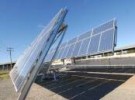As the world builds new low carbon supply chains Tasmania is well positioned to benefit from its low cost clean energy and net-zero status. By leveraging these advantages a Tasmanian low carbon manufacturing and services hub can attract investment and create new job opportunities for Tasmanians. The stage is set and Tasmania has an enormous opportunity to sell our low carbon goods and services to the world.
$0/
(min cost $0)
Login or signup to continue reading
On 24 April Australian Minister for Climate Change and Energy, Chris Bowen announced $73 million for Tasmania from the Powering the Regions Fund. The funds will be used to improve efficiency, trial new technologies and make permanent improvements at some of Tasmania's biggest emitting facilities. Tasmania has seven very large industrial facilities across the island, six of which report emissions to the Federal Government.
They are: Railton Cement (Cement Australia), Bell Bay Aluminium (Rio Tinto), Liberty Steel Bell Bay (formerly Temco - GFG Alliance), Port Latta Pellet Plant (Grange), Savage River (Grange), Boyer Paper Mill (Norske Skog), and Hobart Zinc Works (Nyrstar - does not produce enough emissions to report to the Federal Government).
Collectively they employ about 2,400 Tasmanians and produce value added goods that are essential to the clean energy transition. Some examples are aluminium which is used in electric vehicles, zinc which is used in batteries, iron ore pellets and manganese, both key inputs to steel; and cement which is used in foundations for wind farms.
These industries currently produce around 2.1 million tonnes of CO2-e emissions per year - 25% of Tasmania's emissions - roughly equivalent to the 480,000 cars driven in Tasmania. Whilst reducing these emissions is essential it will be a challenge, but as the CEO of Cement Australia Rob Davies said on 24 April, "when a Tasmanian sees a challenge they really see an opportunity."
The cement works at railton produce about 1.4 million tonnes of cement per year. Cement is essential to the clean energy transition, it is used in foundations at wind farms and in many other types of construction. Cement Australia is currently the largest miner and user of coal in Tasmania, but they intend to reduce coal usage at Railton by up to 50% using funds from the Powering the Regions Fund.
At its Port Latta plant, Grange Resources produces iron ore pellets that are used in high quality steel production, including the Bluescope facility at Port Kembla in NSW. Grange will use its funds from Powering the Regions to reduce emissions from diesel fuel and phase out coal use at Port Latta.
These are two examples of projects that reduce emissions from heavy industry in Tasmania among many initiatives that deserve more recognition. They serve as examples of how Tasmania is leading the world on emissions reduction and is perfectly positioned to grow its position as a low carbon manufacturing and services hub.
Best of all, this investment from Powering the Regions in Tasmanian low carbon manufacturing and services will not only secure existing well paid jobs, but also has the potential to attract more investment to Tasmania's regional communities that have hosted industry for over a century.
Jack Redpath is the Principal of Carbon Zero Initiative.
Tasmania is a low carbon manufacturing and services hub
 20
20
 0
18.05.2024
0
18.05.2024
As the world builds new low carbon supply chains Tasmania is well positioned to benefit from its low cost clean energy and net-zero status. By leveraging these advantages a Tasmanian low carbon manufacturing and services hub can attract investment and create new job opportunities for Tasmanians. The stage is set and Tasmania has an enormous opportunity to sell our low carbon goods and services to the world.
$0/
(min cost $0)
Login or signup to continue reading
On 24 April Australian Minister for Climate Change and Energy, Chris Bowen announced $73 million for Tasmania from the Powering the Regions Fund. The funds will be used to improve efficiency, trial new technologies and make permanent improvements at some of Tasmania's biggest emitting facilities. Tasmania has seven very large industrial facilities across........
© The Examiner
 visit website
visit website






















 Toi Staff
Toi Staff Mohamad Elmasry
Mohamad Elmasry Maoz Inon
Maoz Inon Belen Fernandez
Belen Fernandez Brahma Chellaney
Brahma Chellaney Tarik Cyril Amar
Tarik Cyril Amar Petra Lesjak Tušek
Petra Lesjak Tušek Gideon Levy
Gideon Levy Rachel Marsden
Rachel Marsden Dr Ramzy Baroud
Dr Ramzy Baroud
